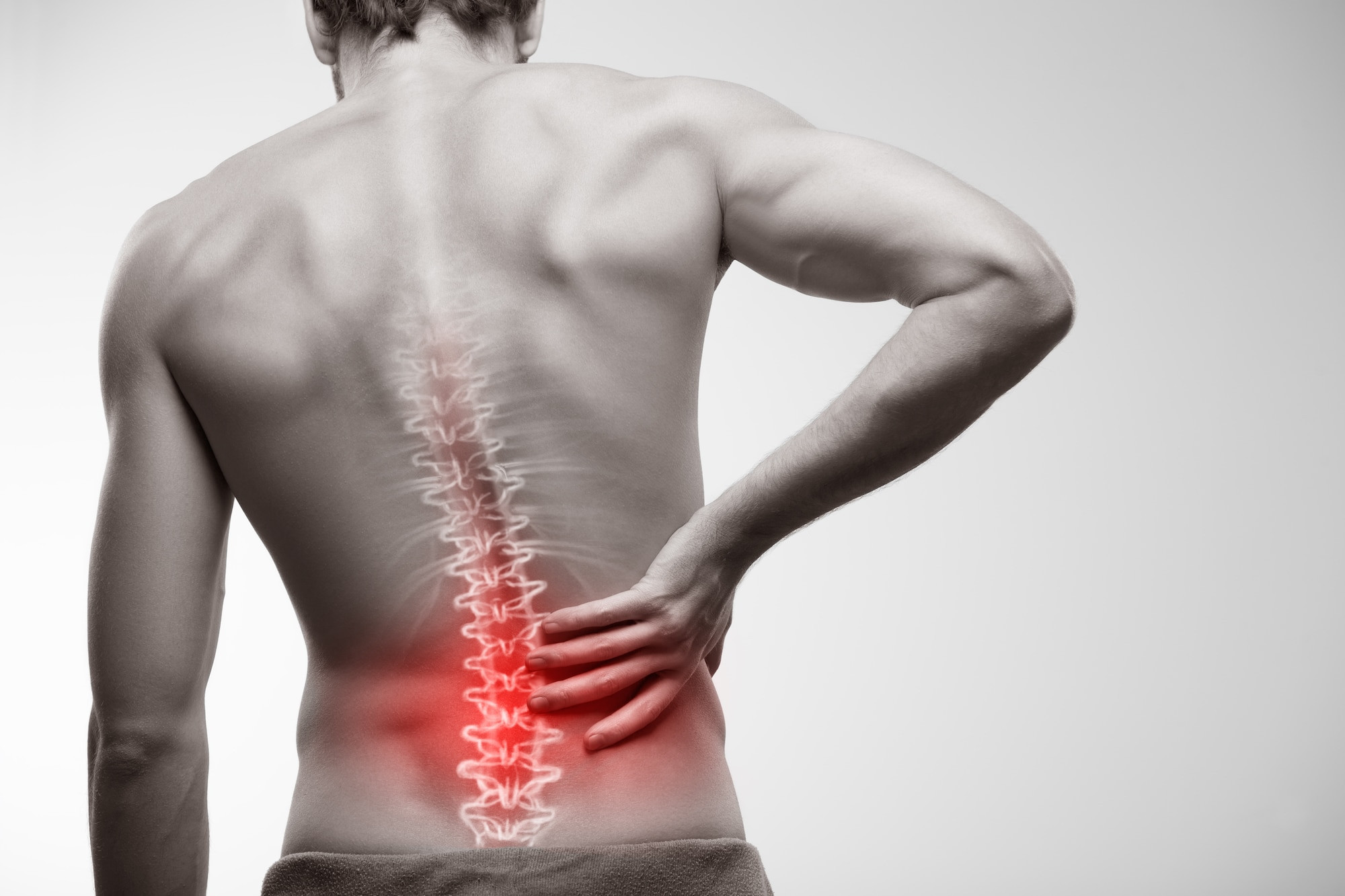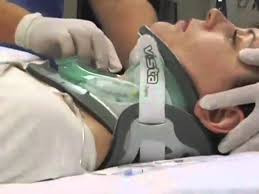Definisi
Fraktur vertebra adalah sebuah kondisi patah tulang belakang yang dapat disebabkan oleh trauma atau kondisi medis lainnya. Sebagian besar fraktur vertebra disebabkan oleh osteoporosis. Osteoporosis terjadi pada 200 juta orang di seluruh dunia, dan mempengaruhi 30% wanita di seluruh dunia. Sementara itu, pada fraktur vertebra yang disebabkan oleh trauma, 80% kasusnya terjadi pada pria. Fraktur vertebra akibat osteoporosis biasanya terjadi pada pinggang (lumbal), sementara pada trauma, setengahnya terjadi pada area tulang belakang bagian leher (servikal).
Penyebab
Fraktur vertebra dapat terjadi akibat trauma atau kondisi medis seperti osteoporosis dan penyebaran kanker (metastasis). Dari semua penyebab, osteoporosis adalah penyakit penyebab tersering. Osteoporosis merupakan kondisi ketika kadar kalsium pada tulang berkurang sehingga tulang menjadi keropos dan rapuh. Akibatnya, tulang belakang rentan patah akibat kegiatan sehari-hari yang ringan seperti bersin atau mengangkat benda ringan. Pada orang dengan osteoporosis, fraktur vertebra seringkali berupa kompresi atau penekanan; artinya, tulang belakang yang patah menekan tulang di bawahnya.
Penyebab kedua tersering fraktur vertebra adalah trauma. Dari semua jenis trauma, penyebab tersering fraktur vertebra adalah tabrakan antar kendaraan bermotor. Selain itu, penyebab lainnya adalah kekerasan fisik, jatuh, dan luka tembak yang menembus tulang belakang.
Selain osteoporosis dan trauma, fraktur vertebra dapat disebabkan oleh beberapa kondisi medis lainnya, seperti metastasis kanker. Jaringan kanker akan menyebar ke tulang belakang sehingga tulang belakang menjadi keropos atau bahkan patah. Selain kanker, kondisi medis lain yang bisa menyebabkan fraktur vertebra adalah osteomielitis, atau infeksi pada tulang.
Faktor Risiko
Faktor risiko terjadinya fraktur vertebra terkait dengan penyebabnya. Fraktur vertebra akibat osteoporosis lebih sering terjadi pada wanita berusia di atas 50 tahun. Selain itu, osteoporosis semakin berisiko terjadi pada perokok, pecandu alkohol, orang dengan kadar estrogen rendah (misalnya pada wanita pascamenopause), anoreksia (gangguan makan, penderita terlalu kurus), gangguan ginjal, kekurangan vitamin D, pengobatan gangguan lambung dengan penghambat pompa proton (proton pump inhibitor, PPI), serta pengobatan dengan steroid jangka panjang misalnya akibat penyakit autoimun (kondisi ketika kekebalan tubuh menyerang sel tubuh sendiri).
Sementara itu, trauma yang menyebabkan fraktur vertebra lebih sering terjadi pada pria, dengan usia rata-rata 32 tahun dan rentang usia 16-30 tahun. Hal ini terjadi karena pria pada usia muda lebih sering mengendarai kendaraan bermotor dan melakukan aktivitas berisiko tinggi yang berpotensi menyebabkan fraktur vertebra.
Gejala
Gejala fraktur vertebra dapat berdiri sendiri atau bersamaan. Gejala yang dapat dialami berupa nyeri punggung yang datang tiba-tiba, yang semakin nyeri apabila berdiri atau berjalan, dan berkurang pada posisi berbaring. Gejala lainnya dapat berupa keterbatasan gerak tulang belakang, tinggi berkurang, serta kelainan bentuk tulang belakang seperti membungkuk dan gangguan pada sistem tubuh. Gangguan pada sistem tubuh dapat berupa konstipasi, usaha napas menurun, serta tidak aktif secara fisik. Dalam jangka panjang, jika fisik pasien tetap tidak aktif, dapat muncul keluhan bengkak dan nyeri pada kaki akibat sumbatan pada pembuluh darah balik dalam. Jika fraktur vertebra mengenai saraf pada sumsum tulang belakang, gejala kerusakan saraf dapat muncul, seperti kelemahan atau kelumpuhan otot, rasa baal, dan kesemutan.
Diagnosis
Diagnosis fraktur vertebra dapat dimulai dari pertanyaan mengenai riwayat penyakit. Biasanya, keluhan yang sering membawa pasien mencari pertolongan adalah nyeri punggung akut atau kronis. Penyebab lainnya adalah riwayat trauma. Pada kasus trauma, kronologi kejadian trauma sangat penting untuk mengetahui kemungkinan cedera pada bagian tubuh lainnya.
Pada kasus trauma, pemeriksaan awal akan meliputi bebasnya jalan napas dan keamanan leher (airway), pernapasan (breathing), dan peredaran darah (circulation). Pada kasus tertentu, dapat terjadi penurunan tekanan darah dan detak jantung, yang disebut sebagai syok neurogenik. Stabilisasi keadaan pasien dibutuhkan sebelum melakukan pemeriksaan selanjutnya. Pemeriksaan selanjutnya dapat berupa pemeriksaan saraf lengkap, yang dapat meliputi pemeriksaan saraf kepala, raba, suhu, gerakan, serta pemeriksaan kekuatan otot pada anus untuk mengetahui adanya kelumpuhan pada otot anus.
Pemeriksaan pencitraan awal yang dapat dilakukan adalah foto rontgen dan computed tomography (CT) scan untuk mengecek keadaan tulang belakang dan mencari bagian tulang belakang yang mengalami fraktur. Jika keadaan pasien sudah stabil, pemeriksaan magnetic resonance imaging (MRI) dapat dilakukan untuk melihat adanya kerusakan jaringan di sekitar tulang dan pada sumsum tulang belakang. Pencitraan seperti bone scan dapat dilakukan apabila ada kecurigaan metastasis kanker pada tulang belakang.
Pemeriksaan laboratorium juga dapat dilakukan sebagai pemeriksaan penunjang. Pemeriksaan yang dilakukan bisa berupa pemeriksaan darah lengkap, kadar gula darah, protein yang menandai peradangan seperti C-reactive protein (CRP), serta laju endap darah (LED). Pemeriksaan ini dapat menjadi penanda penyebab fraktur berupa infeksi pada tulang. Pemeriksaan biopsi atau pengambilan jaringan pada tulang dapat pula dilakukan untuk mengetahui adanya metastasis kanker pada tulang belakang.
Tata Laksana
Tata laksana fraktur vertebra tergantung pada kondisi awal pasien. Jika pasien mengeluhkan nyeri kronik tanpa tanda-tanda gangguan pada saraf dan fungsi sehari-hari lainnya yang bermakna, terapi bertujuan untuk menurunkan nyeri dan meningkatkan fungsi sehari-hari. Pengobatan antinyeri dapat diberikan bersamaan dengan program rehabilitasi seperti fisioterapi. Fisioterapi pada umumnya dilakukan dengan tujuan memperbaiki postur tubuh dan mengurangi nyeri. Selain itu, pasien perlu tirah baring untuk mempercepat pemulihan tulang. Penggunaan korset juga disarankan untuk meningkatkan kenyamanan pasien. Jika nyeri tidak berkurang dengan upaya tersebut, kemungkinan diperlukan pembedahan. Pembedahan bertujuan untuk menstabilkan tulang belakang dan mempertahankan fungsi saraf.
Sementara itu, jika terjadi cedera pada sumsum tulang belakang, terapi akan melibatkan obat-obatan dan berbagai alat sebagai upaya stabilisasi tekanan darah pasien. Stabilisasi ini diperlukan agar jaringan tubuh tetap mendapatkan oksigen dalam jumlah yang cukup. Stabilisasi ini dapat melibatkan intubasi atau pemasangan selang napas, pemasangan selang makan, pemasangan infus, serta pemasangan selang kencing atau kateter urin. Pembedahan dapat dilakukan untuk membebaskan sumsum tulang belakang yang tertekan atau mengalami trauma, serta untuk menstabilkan tulang belakang.
Jika terjadi infeksi pada tulang, pemberian antibiotik lewat infus dapat dilakukan agar antibiotik dapat sampai dengan cepat ke jaringan tulang. Sementara itu, jika ada fraktur yang disebabkan oleh metastasis atau perluasan kanker, terapi akan disesuaikan dengan terapi jenis kanker.
Beberapa pasien membutuhkan dukungan psikologis. Dukungan ini bisa berupa konseling dengan ahli kesehatan jiwa. Beberapa pasien lainnya mungkin membutuhkan terapi antidepresan dan anti-ansietas karena fraktur vertebra sangat memengaruhi fungsi kehidupan sehari-hari.
Komplikasi
Komplikasi fraktur vertebra bisa berhubungan dengan perjalanan penyakit atau pengobatan. Fraktur vertebra dapat meningkatkan risiko patah tulang belakang selanjutnya, kelemahan atau kelumpuhan otot serta ketidakmampuan melakukan aktivitas sehari-hari seperti buang air. Komplikasi lainnya bisa terjadi akibat ketidakmampuan pasien dalam bergerak terlalu banyak, yaitu luka dekubitus, atau luka pada bagian tubuh yang terlalu lama tertekan karena posisi tubuh yang tidak berubah. Selain itu, apabila terjadi cedera pada saraf-saraf yang mengatur pernapasan, komplikasi dapat berupa ketidakmampuan pasien untuk bernapas normal, pengecilan paru-paru, dan infeksi paru (pneumonia).
Sementara itu, komplikasi terkait pengobatan dapat berupa komplikasi penggunaan antinyeri terlalu lama. Penggunaan obat antinyeri nonsteroid (non-steroidal anti-inflammatory drugs, NSAID) terlalu lama dapat menyebabkan perdarahan saluran cerna atas dan tukak lambung. Penggunaan opioid dapat berakibat kecanduan. Sementara itu, pembedahan dapat menyebabkan komplikasi infeksi pada tempat pembedahan, penyumbatan pembuluh darah, serta perburukan kondisi.
Pencegahan
Pencegahan fraktur vertebra dapat dilakukan dengan mengatur pola makan sehat, berhenti merokok, dan membatasi konsumsi alkohol untuk menyehatkan tulang. Pada wanita yang sudah menopause, konsumsi obat anti-osteoporosis diperlukan untuk mencegah osteoporosis dan patah tulang belakang. Sementara itu, pada trauma, pencegahan yang dapat dilakukan berupa berkendara dengan aman dan hati-hati, selalu menggunakan sabuk pengaman saat berkendara dengan mobil, tidak menyetir di bawah pengaruh alkohol, dan tetap menjaga keamanan saat melakukan olahraga ekstrem.
Kapan Harus ke Dokter?
Segeralah ke dokter apabila Anda atau orang di dekat Anda mengalami nyeri punggung dan berusia di atas 65 tahun atau di bawah 12 tahun, nyeri pada punggung saat istirahat sama dengan saat aktif, kehilangan berat badan drastis tanpa usaha menurunkan berat badan, atau memiliki riwayat kanker. Anda dapat segera ke IGD apabila gejala tersebut disertai dengan ketidakmampuan untuk menahan buang air besar atau buang air kecil, nyeri yang sangat parah disertai kelemahan atau kelumpuhan otot dan rasa baal, atau demam tinggi.
Mau tahu informasi seputar penyakit lainnya? Cek di sini, ya!
- dr Hanifa Rahma
Ghobrial, G. (2021). Vertebral Fracture: Practice Essentials, Epidemiology, Pathophysiology. Retrieved 14 December 2021, from https://emedicine.medscape.com/article/248236-overview#showall
Pilitsis, J. (2019). Vertebral Compression Fractures – Symptoms, Complications, Diagnosis and Treatments. Retrieved 14 December 2021, from https://www.aans.org/en/Patients/Neurosurgical-Conditions-and-Treatments/Vertebral-Compression-Fractures
Whitney, E., & Alastra, A. (2021). Vertebral Fracture. Retrieved 14 December 2021, from https://www.ncbi.nlm.nih.gov/books/NBK547673/












